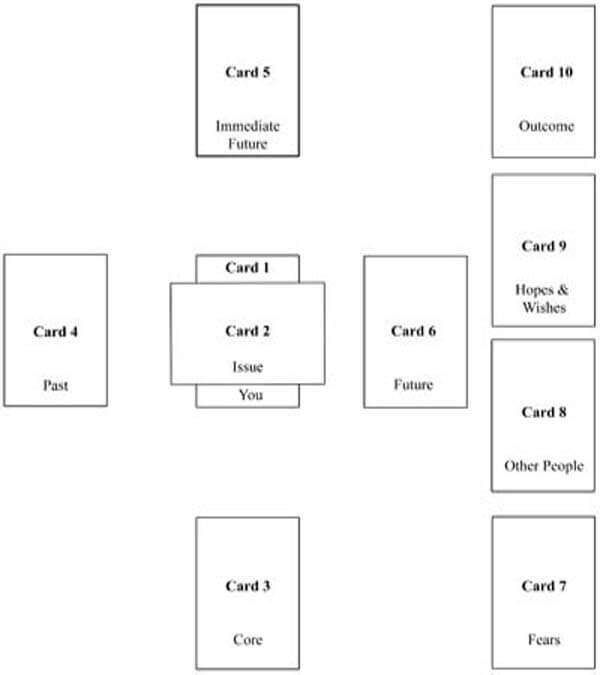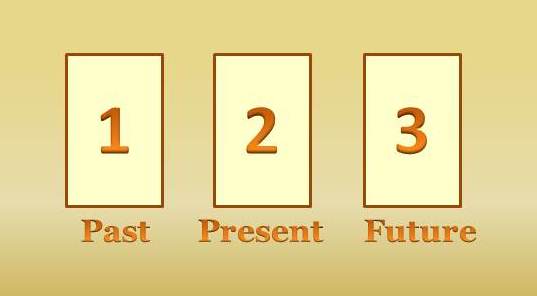Tarot is a mystical world! There’s much more than what meets the eye via a hugely attractive and intriguing Tarot card deck. A colourful and alluring deck of Tarot cards can simply be magical! And, its magic can be aptly employed to soothe, counsel, predict and guide. It can help clear one’s confusion with valuable insights and advice. And, can help one connect with his higher, inner self. This very aspect of Tarot makes it unique and more useful. Tarot focuses on analysing the past to address the current problems with a definite view on future to help one take just the right decisions.
For Witches, the Tarot is perhaps the most widely used divinatory tool. There are 78 Tarot cards in a complete deck. The first 22 are called the Major Arcana Tarot cards. The remaining 56 Minor Arcana cards are divided into four suits: Wands, Cups, Swords, and Pentacles. Each suit contains 14 cards, including 10 numbered cards plus a Page, Knight, Queen, and King.
Major Arcana Tarot Cards
The usage of Arcana stems from the word Arcane. ‘Major Arcana’ means ‘the big secret’. The Major Arcana deck of Tarot comprises the first 22 cards in the deck. These cards signify the major events in the journey of life of a person from birth to death, and rebirth. Each of these 22 cards has a particular meaning to convey, a definite significance. For instance, The Fool, the first of the Major Arcana cards, signifies the innocent baby embarking on the journey of life; The Lovers is the card of the heart and relationships; The Chariot signifies an ongoing journey; The Death is the card of eternal change or rebirth; The Moon means the gaining of inner knowledge; and The World signifies the end of the cycle of birth and reincarnation.
Minor Arcana Tarot Cards
The biggest chunk of the Tarot deck, 56 of the 78 cards, comprises the Minor Arcana. 40 cards out of these fall exclusively under the Minor Arcana, while the other 16 also form a part of the Royal Arcana or Court Cards. If the Major Arcana can be said to convey the big picture, the Minor Arcana signifies the specifics in the life of a person. It is divided into four parts: The Suit of Swords signifies the realm of the mind and intellect, our decisions and insights. The Suit of Cups has to do with the things of the heart, things we love and care about. The Suit of Wands represents our power and life energy as applied to the situations and events we face in life. And lastly, the Suit of Pentacles represents our labours and the rewards we gain from them.
Court Cards/Royal Arcana Tarot Cards
Each of the four suits of the Minor Arcana is divided further. Four Court Cards are extracted from each Minor Arcana suit, and they are classified under each category – The King, Queen, Knight and Page, signifying their specific traits. This makes the total Court Cards 16. The King is creative, inspiring and bold, and wants to create a lasting impact on the world. The Queen is attractive, energetic, cheerful and self-assured; she does not impose, but subtly influences circumstances. The Knights may be termed extremists, they express their qualities to the utmost limit. For instance, if they are cautious, they will be cautious to a fault, weighing all the pros and cons meticulously before making a decision. The Page motivates us to enjoy the thrill of mental and even financial challenges.
Royal Arcana Tarot Cards
Each of the four suits of the Minor Arcana is divided further. Four Court Cards are extracted from each Minor Arcana suit, and they are classified under each category – The King, Queen, Knight and Page, signifying their specific traits. This makes the total Court Cards 16. The King is creative, inspiring and bold, and wants to create a lasting impact on the world. The Queen is attractive, energetic, cheerful and self-assured; she does not impose, but subtly influences circumstances. The Knights may be termed extremists, they express their qualities to the utmost limit. For instance, if they are cautious, they will be cautious to a fault, weighing all the pros and cons meticulously before making a decision.
How to Use Tarot Cards
There are four basic steps when you’re reading Tarot cards:
- First, consider your question
- Select a Tarot spread with positions that relate to that question.
- Shuffle the cards and lay them out in that spread
- Interpret the cards to answer your question.
Easy!
Tip: Before shuffling, take a moment to relax and tune in to your intuition. Then, mix up the cards in any way that feels right — cut or fan the deck over and over, or simply jumble the cards on the table and put them back together. There is no wrong way to shuffle your Tarot cards.
Anyone can learn how to read Tarot cards. There are many spreads available online to inspire you, and you don’t have to have the meaning of every card memorized — you can look up the meanings by clicking on the links to your left!
The Celtic Cross Spread

There are a variety of approaches to using the Tarot for divination and an infinite amount of spreads to use.
At first, beginners are advised to use the well known Celtic Cross spread made popular by A.E. Waite, one of the creators of the Rider-Waite Tarot :
1. The Significator-This card shows the general atmosphere and influences that surround the question. Some readers choose this card to represent their client; others just deal the card out as it comes.
2. This card is laid across the Significator and is always read as if it is the right way up. This card represents the specific forces of the moment that affect the issue be they opposing or otherwise.
3. This is the basis of the matter. These are the things that have happened in the more distant past.
4. This is what is behind. These are the things that have happened in the immediate past.
5. This is the crown of the matter. This card shows things that may be coming in the future.
6. This is in front. This card shows the immediate next turn of events.
7. These are the fears. This card shows the individual’s worries about a matter.
8. Environmental factors. This card represents the influences of family, friends or colleagues.
9. Hopes. This is what the individual hopes to be the outcome.
10. Final outcome. This card tells of what the end of the matter will be.
The 3-Card Spread
This is a less complex spread than the Celtic cross spread.
In our coven, it is the preferred spread and each of us has a slightly unique way of considering the interpretation of these three cards.
Basically all you need to do is focus on a single question, shuffle the cards and place the cards in the Past | Present | Future position.
For example, you may have a question about a current or possible relationship:
- Card number 1 is representative of the issues from your past that may contribute to or hinder your relationship.
- Card number 2 is representative of events taking place in your life in the present, which may be positive or negative for the relationship.
- Card 3 is representative of the outcome you may or may not be looking for.

You don’t need to be limited by Reading the cards as Past | Present | Future
Here are some other combinations for you to consider:
Situation | Action | Result
Obstacles | How to Overcome | Result
Mind | Body | Soul
What to do now | What to do next | What to do next
Goals | Starting Point | Action
Who Can Help | How Can They Help | What Should I Do
Option A | Option B | Clarifying Card
Need to Know | Need to Do | Need to Say
Savannah’s 3-Card Spread:
Querent | Other Person | Outcome
Personally I don’t do straight tarot readings. As a spellcaster I use the cards to help Guide either my thoughts or spiritual suggestions.
I’m always looking for potential challenges or something I need to know. So with the question in mind I pull the three cards. My spirit guides will tell me what I need to know about the querent or myself in the situation. Next they will tell me about the other person pertaining to the question I was asking, but spirit also made tell me something else I need to be mindful about when working with or talking about the other person.
If I’m pulling the cards for the client, I might ask my spirit guides as to what would be the outcome for my client without spiritual/spellcasting intervention. Then I would pull another card, laying it on top of the outcome card, while asking the spirit what would be the outcome should I cast a spell on the situation?”
Any additional cards I pull for that client and their situation gets laid on the specific pile relevant to the question asked.
Otherwise, I think there’s great benefit in pulling a single card. When you focus on the question, ask for spiritual guidance and then except the card that is sitting before you as to the answer on what you should do, that should be enough.
– Savannah
Buying a Tarot Deck
Broadly speaking the Tarot has two uses; as a spiritual, self-help tool of enlightenment, or a tool for divination. And often, both. However, not every Tarot deck is designed to have a deep range of uses. Many are little more than a showcase for an artist’s skills, although admittedly lovely to look at.
For a Tarot to be effective it must have a system of symbols, but symbols in the Jungian sense of the word. Jung defined a symbol as “…a term, a name or even a picture that may be familiar in daily life, yet that possesses specific connotations in addition to its conventional and obvious meaning it has a wider ‘unconscious’ aspect that is never precisely defined or fully explained. Nor can one hope to define or explain it. As the mind explores the symbol, it is led to ideas that lie beyond the scope of reason…” (10).
Quite literally the Tarot can be seen as a symbolic representation of everything in existence, representing the forces of life and how they interact in various ways. Because of this it is able to widen the individual’s view of the world and show them their place within it.
The best decks for beginners are:
- The Golden Dawn Tarot
- The B.O.T.A. Tarot — Builders Of The Adytum
- The Hermetic Tarot
Acceptable decks for beginners include:
- The Rider-Waite (or Albano Waite) Tarot
- Tarot decks based on the Rider Waite, such as:
- Aquarian Tarot
- Morgan-Greer Tarot
- Royal Fez Moroccan Tarot
The Crowley Thoth deck is an excellent deck but too complex in symbolism for beginners. If you are not a beginner in working with the Tarot and you really like the Thoth deck, go ahead and use it. If you are not familiar with this deck, avoid it for now.
Under no circumstances should you use a “non-standard” deck; that is a deck with more or less than 78 cards as described above. This would include the Secret Dakini Oracle, I Ching, Lenormand or Gypsy Witch fortune telling cards and many others. This is not to say that these decks are bad or wrong, only that they are not relevant to these lessons.
Tarot decks can be purchased at most major bookstores; however, I suggest that you patronize metaphysical bookstores or occult supply shops. The people who work there are generally far more knowledgeable, friendly and helpful than those at a general bookstore.
Author: Blonde Gypsy

